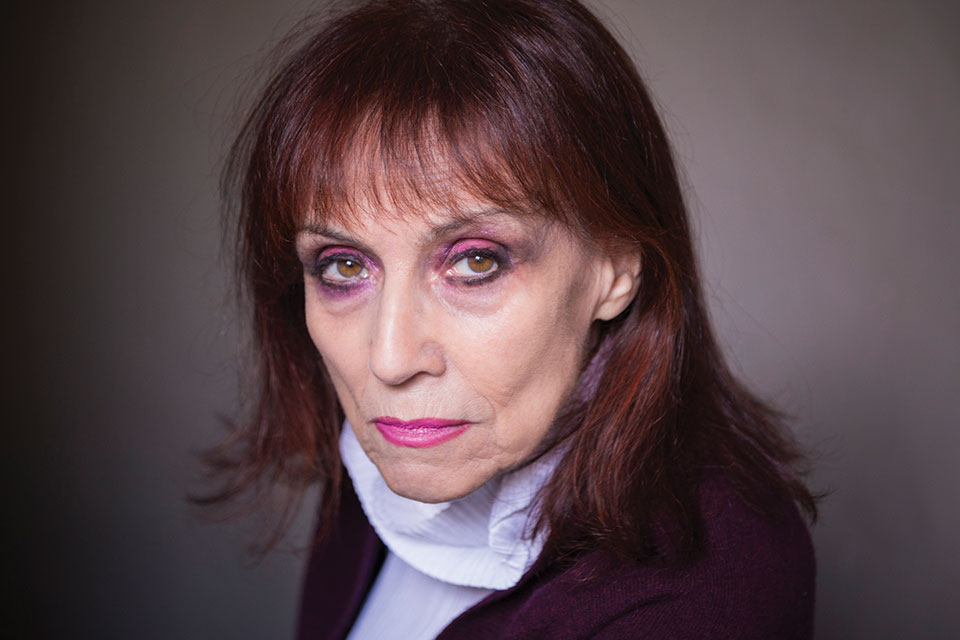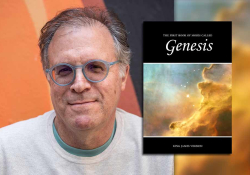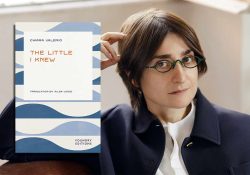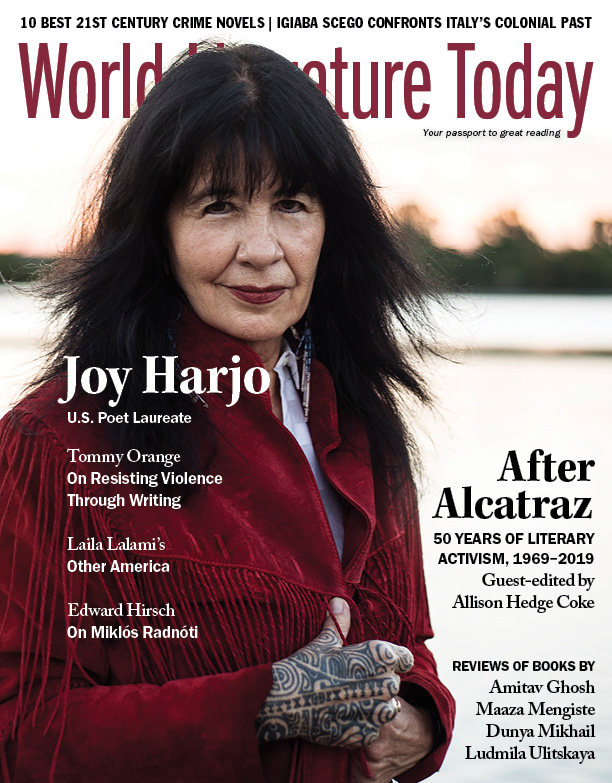From the Heart of the Void: A Conversation with Annie Le Brun

From the publication of Sur le Champ (1967) to De qui n’a pas de prix (2019), Annie Le Brun’s books invite us to confront an uncompromising thought process that places at the heart of the sensible experience the relationship that each of us has with the question of disaster, without necessarily daring to admit it. Her books resemble a pull factor, an intangible space of desertion, in the sense that they allow us to maintain a healthy distance from all our cultural automatisms, our presupposed affiliations, and finally from the academic rumblings of thought. But reading Annie Le Brun (b. 1942, Rennes) also means learning to connect, beyond any form of preformatted literary history, the basic foundation of poetic savagery and imagination that refracts, in the form of anamorphosis, the works of Sade, Aimé Césaire, Leonora Carrington, Radovan Ivšić, Victor Hugo, or Raymond Roussel. Discovering Annie Le Brun’s work means ultimately giving oneself the chance to listen to an original critical voice, which, in the constant energy it deploys to face the chaos of the world, sketches out a challenge of meaning, allowing everyone to stand up against all odds. Our meeting in Oklahoma City centered on the theme of disaster.
Karl Pollin-Dubois: The motif of catastrophe is a predominant subject within the poetic reflection that you have carried out since the 1980s on our concrete world, by drawing on literature, philosophy, and the visual arts. Early on in your essay Perspective dépravée (1991), you write that “thought would be linked to the feeling of catastrophe at the deepest level of ourselves.” In order to initiate this conversation, could you perhaps readdress this intrinsic link that, for you, ties together catastrophe and the practice of thought?
Annie Le Brun: I am more and more convinced that we only think when we cannot do otherwise, when there is a sudden need to understand or even just to grasp the impressions, the emotions that go through us. In other words, when one takes the risk of facing the unknown that inhabits us. That is why I see something that is related to the notion of disaster, insofar as it can be defined as the hitherto unthinkable occurrence that changes the course of events. I became aware of this long ago, writing in 1988: “There is a haunting feeling of catastrophe at the core of a human being’s heart, obsessive like the distant echo of very long-range impulses of which, astounded, we sometimes perceive the magnitude but we are unaware of their origin. Perhaps, in fact, we live following the rhythm of inner eruptions, manifested by fault lines that are as much within us as outside us” (Appel d’air). Today, I even believe that we only begin to think starting from this imbalance that grounds us.
I am more and more convinced that we only think when we cannot do otherwise, when there is a sudden need to understand or even just to grasp the impressions, the emotions that go through us.
Pollin-Dubois: In several of your works, you refer to the founding event of the Lisbon earthquake in 1755, which marks a decisive breaking point in the usual depictions of disaster that had been imposed until then. In what way did this earthquake, which occurred at the heart of the Age of Enlightenment, profoundly change the position of human beings in the face of disaster?
Le Brun: In fact, the notion of disaster is an inherent part of the human mind. It appears as soon as we wonder about ourselves. Thus, from chaos to Revelation, from the Flood to the end of time, from the Tower of Babel to the year 1000, to the total upheaval that engendered the revolutionary Grand Soir,[1]; countless are the imaginary constructions that lead to catastrophe as a constant, around which humanity has sought to define its relationship to the world, paradoxically, from that which is accidental. But this has to do with an accidental phenomenon that founding myths and religions serve to call forth by always evoking disaster as the disorder that generates order.
However, in 1755, the opposite happened in Lisbon; a religious city teeming above all others, suddenly devastated by an earthquake, followed by a tidal wave and the looting of the city by its own inhabitants. In such an unexpected way, this becomes the terrible proof that God, nature, and men are quite different from what religion and philosophy together had intended. There is no doubt that the feeling of catastrophe arises from this shattered horizon, with the consequence that this unprecedented shuddering, tearing apart religious and philosophical landmarks, will raise the question of the unthinkable in relation to that which appeared to make sense.
Pollin-Dubois: During the eighteenth century, both in philosophy and in the arts, we witnessed a complete renewal of the catastrophic imagination, which involved especially a transformation of the way in which we look at nature and the place that human beings hold within it. What exactly does this transformation entail, and what specific works do you think reflect this new form of imagination?
Le Brun: In my opinion, it all starts with this Lisbon disaster. It is indeed remarkable that in twenty years or so, European sensibilities have been overwhelmed by the evocation of imaginary disasters, storms, shipwrecks, tidal waves, volcanic eruptions, which have in common that they represent disaster without religious association. Thus, suddenly, having become profane, disaster imposed itself as the most considerable way of revealing a sense of the infinite that inhabits us. This is a major turnaround in the history of the imagination. For all that Western man had dared to think of only in the form of divine punishment, that is, by holding God responsible, whether it be the Apocalypse, the Flood, or Hell, at that point the progress of unbelief shows that it has a formidable power, that of absolute negation, which man would control.
As a matter of fact, Sade was the first to have found an apt analogy in the image of the volcano, which for him becomes emblematic of what is at stake, as one of the heroes of La Nouvelle Justine confides: “One day, while looking at Etna, whose heart was shooting out flames, I wanted to be that famous volcano.” Never before had the feeling of catastrophe been so splendidly formulated, including in its erotic implications, through this grandiose polarity, between desire and the forces of nature. At issue is what links the misguided actions of man and nature, which increasingly asserts itself in the sublime of a metaphysical revolt that is from then on inseparable from the poetic adventure. Hence, the desire for the end of the world that, until the middle of the twentieth century, provokes the strongest thoughts, imposing itself precisely as the sensitive source of our sense of the infinite.
Pollin-Dubois: For poets such as Hugo, Rimbaud, Jarry, or Breton, the lyrical imagination, which explores what we might call the inhuman side within man, was also a way of rejecting the world as it is. In the middle of the twentieth century, with the emergence of the disasters at Auschwitz, Hiroshima, or Chernobyl, you suggest that a paradigm shift has taken place, in the sense that the relationship between real and imagined disaster has been reversed. To what extent do the major disasters of the twentieth century force us to rethink our perception of disaster?
Le Brun: There is probably no great poet who has not mused on this astounding otherness that the catastrophic imagination of the eighteenth century had in large part revealed to us. Because of this new familiarity with the idea of inhumanity, it became possible to turn it into a formidable weapon to reject the narrow-mindedness of mainstream ideological representations. And the most striking example is undoubtedly Lautréamont’s Les Chants de Maldoror. Except that, from the moment when the possibility of annihilation became real, first with Hiroshima and the nuclear disasters that followed it, imagination was suddenly deprived of the unsettling feeling of this distorted perspective, just as reflection was then prevented from venturing into the vertigo of an unlimited negation.
And here it should be emphasized that, becoming aware of this loss and seized by the novelty of the atomic situation, André Breton did not hesitate to declare in 1948: “This end of the world is not ours.” Moreover, even if Breton still insisted on the importance of the great negating tradition, from Sade to Nerval, from Baudelaire to Mallarmé, from Rimbaud to Lautréamont, he clearly states: “This end of the world . . . I do not hesitate to say that today we no longer want it. We no longer want it since we have seen the features under which it is emerging and which, against all expectations, for us, is absurdity. We have only repugnance toward this universal oblivion, insofar as the mere alienation of man may have caused it” (La Lampe dans l’horloge, 1948).
It remains the fact that, seventy years later, staying with this remarkable analysis prevents us from measuring what has been lost with regard to the infinite perspective of the end of the world, which, since then, has not ceased to be scattered into the realm of the possible. It is quite simply our power of negation, gradually reduced to pieces, as evidenced by what we see in the intensive production of disaster films over the years. We all know these gigantic skyscraper fires, the breaking of brimful dams, the collapse of delirious underground architectures, which are mentioned as possible examples of disasters inherent in modernity but ultimately always brought to fruition by increasing technology. There is no doubt that their multiplication in so many partial disasters is intended to conceal the fact that today’s disasters are less natural than disasters caused essentially by a disregard for the balances of nature. And, by the same token, they distract us from a catastrophic reality that we end up denying.
Pollin-Dubois: In your latest books, you refer to the growing trivialization of human and natural disasters on a global scale over the past thirty years. Instead, could it be said that, in the collective imagination, the disasters of the twentieth century still had a power of fear and shock associated with their frightful events? For you, what are the components of this recent phenomenon of trivialization of disasters, and how can we understand it?
Le Brun: You are correct: right after Hiroshima, and we could add Chernobyl as well as Fukushima, those names undoubtedly had the power of shock and fear you mentioned. Although, between the catastrophes, we have witnessed the implementation of an astonishing process of trivialization. I am referring to the pseudo-objective tranquility with which the media, in both cases, have gradually come to refer to these disasters gradually as accidents that are undoubtedly serious but part of the order of things. And even so, as time passes and secrets are being leaked, we begin to discover the horror of what really happened—whether in Chernobyl or Fukushima—as witnesses and victims reported overwhelming facts, often with unpredictable consequences. Because with regard to these nuclear disasters, it is all living beings who are contaminated, for periods ranging from a few months, for some populaces, to tens of thousands of years for others, as with the effects of plutonium.
And despite what has been said, we must not forget that the images of the Chernobyl cloud have circled the planet, literally and symbolically. Who could have claimed that the scale of the Chernobyl effect was not linked to a systematic disregard for the individual, directly inherited from the Soviet system? Who, half a century later, could have argued that the Fukushima disaster would be connected to the irresponsibility of neocapitalism merging with the cynicism of international finance? Finally, who would dare to claim that the breakdown of major biological balances, ranging from systematic deforestation to global warming, is not mixed in with the barbarism of globalization, merging with all the possible variants of a policy of devastation?
To these we are constantly adding disasters of all kinds, with social disasters following climate disasters, which come directly from financial disasters, to the point of suggesting that everything ultimately is dramatically interrelated. This is the case despite the fact that the growing sophistication of the current financial arrangements makes it difficult to imagine the resulting disasters. It is, however, their extreme brutality that characterizes a system whose predatory power, operating to destroy everything that can hinder its development, aggravates the seemingly natural disasters it generates. This is precisely what Naomi Klein referred to when she posited the “rise of disaster capitalism” (The Shock Doctrine) and its “strategy of shock,” which you were able to get an idea of here in 2005 with Hurricane Katrina as well as with the financial crisis of 2008. That’s where the novelty lies, and unfortunately this is only the beginning of the chain of disasters tied to the rise of violence in the financialization of the world.
Pollin-Dubois: One of the most stimulating aspects of your thinking stems from the fierce energy that comes out of it, far from any kind of resignation. It seems to me that this energy is partly due to your refusal to propose yet another theoretical and systematic criticism of the society of the globalized spectacle. To outline the double process of devastation and ugliness in which the world is currently engaged, you rely above all on the metaphorical power of analogical thought, which you contrast with a kind of logical thought that would rely exclusively on the tools dictated by reason. Could you tell us about this analogical thinking, and how it allows you to discover spaces that reason alone cannot explore?
Everything is still interconnected, creating the need for rigorous and careful thinking.
Le Brun: For a long time now, I have been struck by the critical dysfunction that characterizes our time. Even more since most continue to use traditional theoretical tools, without even realizing that they are completely inappropriate to the long-term disaster we are experiencing: the economic disaster, ecological disaster, and social disaster of a world that is going to ruin itself despite our denials. Which is to say that everything is still interconnected, creating the need for rigorous and careful thinking. Somewhat in the way in which Léonora Carrington states that “the duty of the right eye is to dive into the telescope while the left eye questions the microscope” (Le Cornet acoustique). Courage? Humor? Clairvoyance? I would say all three simultaneously, as far as Leonora is concerned. In any case, I think that only analogical thinking can achieve something similar.
But, as I wrote a few years ago, while retaining the freedom to “take known roads in the opposite direction, to find others that have barely been identified, we must ride on intuition and risk being violently bucked off, even as the bridle remains upon our necks, but with the sole assurance never to claim any kind of objective authority.” I conclude, with this clarification: “To ensure that there is no mistake, I am always on the edge of the world, in the heart of the void. I do not restart. I make it worse. . . . And if no one is waiting for me when I arrive, there will always be my shadow to say No” (Si Rien avait une forme, ce serait cela).
March 2019
Translation from the French
[1]The expression “Grand Soir” refers to the belief in a radical, sudden change of the existing social order, made possible by people’s force of insurrection.
More by Karl Pollin-Dubois
Autumn 2019
World Literature Today’s autumn issue celebrates U.S. Poet Laureate Joy Harjo with poems and an interview inside, and the cover feature devoted to Literary Activism commemorates the 50th anniversary of the Alcatraz occupation that began in November 1969, guest-edited by Allison Hedge Coke. As always, a generous selection of book reviews and other features round out the issue.
Table of Contents










